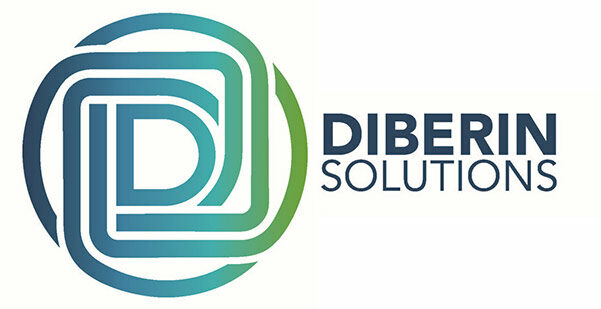The medical device industry is booming, and is projected to reach an astounding $595 billion by 2024. Whether you’re a physician or an inventor with a great idea or you just want in on the action, you may be wondering how to start a medical device company.
It’s important to understand that there is most likely going to be a long road ahead, with many hurdles to overcome. However, when done right, starting a medical device business can be very rewarding, not just financially, but in the way that you can change lives.
So, if you’re ready to get started with a new medical device, here are five steps you should be sure to follow.
1. Following the Medical Device Startup Process
 The medical device startup process begins and ends with the 3 I’s – Identification, Invention, and Implementation.
The medical device startup process begins and ends with the 3 I’s – Identification, Invention, and Implementation.
Medical device startups often come into existence when one person identifies an unmet clinical need. Often, a physician or someone else in the medical field is the first to identify the need, as they have first-hand experience with the need and understand that the right solution could greatly improve medical procedures and physician or patient well-being.
Once the need is identified, the invention of a solution comes into play – often along with a few other key people. The individual who identified the need usually recruits a team of experts in different areas. For example, an engineer who has the skills necessary to design the device and see it through from prototype to final development.
Finally, a business professional is brought on board to assist with implementation of the device into the market. This person’s responsibilities include handling intellectual property, reimbursement options, and investment strategies to further research and development and commercialization efforts.
2. Patenting the Medical Device
Getting a medical device patent isn’t always easy, but your invention is your baby and you need to protect it like one.
So what does the patent do?
It stops another person or company from unauthorized use or replication of the device. To get a patent, of course, your medical device must be considered “novel,” meaning it must be brand-new and cannot have previously appeared in another patent or in an advertisement or a trade brochure. Basically, no one outside of your company should know anything about the invention until the patent has been filed.
You should always file your patent application before you invest money in any invention to be sure no competitors in your field have already secured, or are in the process of securing, a patent on something similar. To search for prior-art patents in the United States, you can check out the U.S. Patent and Trademark Office (USPTO) website.
It’s important to note that the USPTO states it can take 36 months for a patent to be granted and that protection is only valid in the United States. Therefore, you must file a medical device patent in every country where you want to protect your invention.
3. Finding Funding for Medical Device Startup Costs
It’s no secret that most medical device startups are going to need money. Finding it can be easier said than done, especially if there is not a venture capitalist ready to take on the risk of backing the product (and don’t count on being able to get on Shark Tank). This is when entrepreneurs need to think a little smaller when it comes to medical device funding.
Here are five ways medical startups can gain the financial support they need:
Angel Investors
If you can find someone who’s interested in the solution your medical device provides, and who also happens to have deep pockets, they may be willing to invest in your business for an equity stake in it. Finding an angel investor often involves a lot of networking with people in the right places.
Private Placement
Private placement involves selling securities privately without an initial public offering. Often, this means selling to a small number of chosen investors, such as friends, family, and accredited and institutional investors.
Academic Incubators
It’s easy to forget that college campuses aren’t just a place to party. Many medical and scientific legends got their foothold on them, and today’s universities recognize this and want to be part of it. They do this by offering subsidized accommodations, academic support, business mentoring, and connections for resourcing prototyping, testing, and clinical trials.
Crowdfunding
Still in the early stages and need funds for validation or prototyping? Crowdsourcing through the internet is an effective way to obtain not just finances or donations, but input and insight from a large group of interested people. The National Center for Biotechnology Information (NCBI) recently covered the crowdfunding phenomenon and its applications for medical entrepreneurs.
Local Resources
City, state, and county governments often use tax breaks and other incentives to attract entrepreneurs. There may be technical associations (and tech incubators) willing to assist you in product development. In addition, local trade associations may offer access to universities or hospitals to aid in clinical testing or may be able to connect you with an angel investor or a local entrepreneurial competition offering significant payouts.
4. Regulations and the FDA
Here’s one final hurdle, and it’s a big one: meeting FDA requirements. Prior to marketing a medical device, companies must obtain FDA clearance or approval, depending on the classification of the medical device (Class I devices are considered low-risk and are subject to fewer regulatory controls, while Class III is considered the highest risk with the greatest regulatory controls).
Remember these three things when submitting a medical device for FDA approval:
-
Never underestimate the thoroughness of the FDA; make sure your submission package is airtight and every scenario utilizing the device has been covered.
-
Always staff or at least speak with someone who understands FDA regulations to be sure your bases are covered.
-
Don’t tout your product as an industry disruptor – even if you think it is – as this raises the eyebrows of the FDA and can cause them to scrutinize your invention even further. Instead, find similarities to other products on the market which will help put them at ease when it comes to obtaining regulatory approval.
Want to learn more about the sometimes painful process of gaining FDA approval? Check out this story about medical device rockstar Dr. Tom Fogarty, inventor of the balloon catheter, and the challenges he’s faced in the medical device business.
5. Deciding to License, Assign, or Manufacture
Once the medical device has been patented, funded, and a prototype has been created, it’s time to bring it to market by either licensing, assigning, or manufacturing the product. This will depend on a number of factors, including long-term goals, the desire to maintain control over the product, and available resources.
Licensing
If you decide to license the medical device, you’ll be giving a third-party permission to commercialize the product for a specified amount of time, receiving an agreed upon royalty (usually a percentage of sales). When the licensing agreement is up, you regain complete control of the invention.
Assigning
Assigning is basically another word for selling. If you opt to assign your invention, you are relinquishing ownership to another party in exchange for a one-time lump sum payment or series of payments.
Manufacturing
Want to keep absolute control over your invention? Then you need to manufacture it yourself, likely outsourcing to a trusted third-party manufacturer (be aware that finding one that understands the medical device manufacturing process, your unique business needs, and FDA regulations can take some time). If you go this route, it will be your responsibility to further develop, mass manufacture, commercialize, and market the product, which requires industry expertise and significant financial investments.
Avoid Medical Device Startup Mistakes with Diberin Solutions
“It’s wonderful to be able to innovate, particularly in the medical field,” says the aforementioned Dr. Tom Fogarty. “If you develop something that’s adopted by other physicians, you’ve touched many patients.”
With that in mind, creating a medical device startup can be very rewarding. Of course, it’s not without its challenges.
At Diberin Solutions, our goal is to make sure medical device startups entering the industry succeed. We help you reach your full potential, avoid common mistakes, and work with you as you climb these steps to starting a medical device company by bringing in experienced experts to ensure the success of your new company or medical device.
We’ve helped startups like BandGrip, HomeThrive, and others get off the ground, and we want to help you. Contact Diberin Solutions today to learn more.
